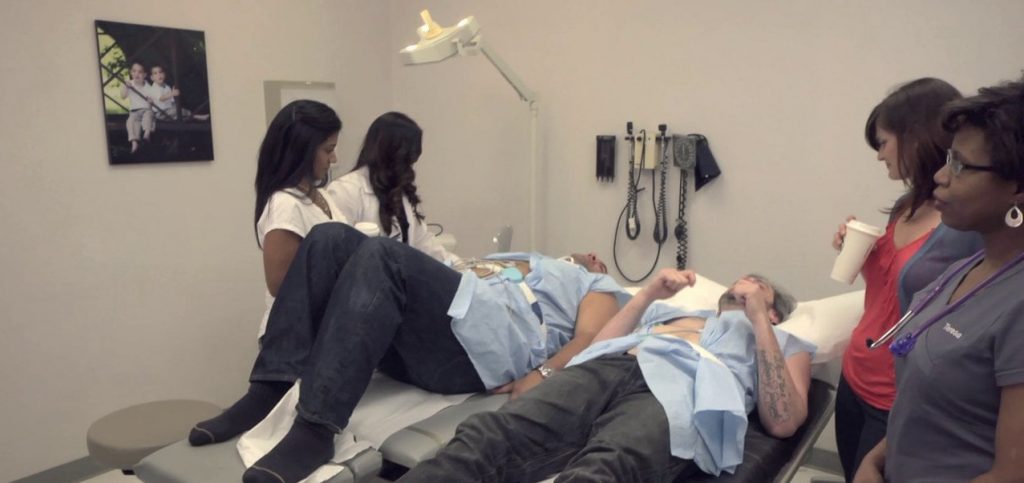Men Experience Labor-Like Pain
Some believe that women have a higher pain tolerance than men, but no one can know for sure.
It’s quite a controversial subject, as no one has experienced the other gender’s pain.
But now, with modern technology, they can!
Two men decided to test a labor pain simulator, while their wives sat next to them and watched.

At the end, they said it was way worse than they’d expected and that their mothers are true heroes.
According to Wikipedia, in many cases and with increasing frequency, childbirth is achieved through induction of labour or caesarean section. Caesarean section is the removal of the neonate through a surgical incision in the abdomen, rather than through vaginal birth.
Childbirth by C-Sections increased 50% in the U.S. from 1996 to 2006, and comprise nearly 32% of births in the U.S. and Canada. Induced births and elective cesarean before 39 weeks can be harmful to the neonate as well as harmful or without benefit to the mother.

Therefore, many guidelines recommend against non-medically required induced births and elective cesarean before 39 weeks. The rate of labour induction in the United States is 22%, and has more than doubled from 1990 to 2006.
Health conditions that may warrant induced labour or cesarean delivery include gestational or chronic hypertension, preeclampsia, eclampsia, diabetes, premature rupture of membranes, severe fetal growth restriction, and post-term pregnancy.

Cesarean section too may be of benefit to both the mother and baby for certain indications including maternal HIV/AIDS, fetal abnormality, breech position, fetal distress, multiple gestations, and maternal medical conditions which would be worsened by labour or vaginal birth.
Pitocin is the most commonly used agent for induction in the United States, and is used to induce uterine contractions.